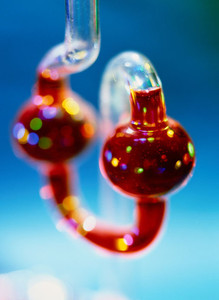The unique characteristics of biologicals were discussed in a review of biosimilars in rheumatology by author José M Serra López-Matencio and colleagues from the Universidad Autónoma, Madrid, Spain*.
‘Biosimilar medicine’ (European Medicines Agency, EMA) or ‘follow-on biologics’ (US Food and Drug Administration, FDA) are products designed to act in a similar way to the originator or reference product that has been previously approved for a particular disease. Biosimilars are not the same as generics, see Table 1, which have simpler chemical structures and are considered to be identical to their reference medicines. Biosimilars have been proven, through rigorous clinical trials, to have a high similarity to the reference biological in terms of quality, efficacy and safety.
Like the reference biological, a biosimilar has a degree of natural variability between batches and even over time. This is because, although DNA sequences are known, variations in the final product can occur due to post-translational modifications (glycosylation, methylation, etc.) inherent to protein molecules, use of different vectors or even environmental changes. These variations can affect the safety and efficacy of the biological [1].
The process of producing a biosimilar starts with the development of an equivalent host-cell clone, which can take 1‒1.5 years of research. Process development, fermentation, purification and manufacturing scale-up to reach the required standards can take another 1‒1.5 years. In addition, analytical, non-clinical and clinical studies can take a further 3.5‒4.5 years. Thus, it takes many years to bring a biosimilar to market – far longer than producing a generic equivalent of a small molecule drug.
The biological manufacturing process is highly complex and critical in determining the final characteristics of the product. Indeed, it is said that ‘the process is the product’. It begins using cloning vectors to copy relevant genes into living host cells (eukaryotes, bacteria or yeast cells). Once the protein is expressed, the cell is selected and expanded in order to produce a well-defined protein. Then the product is purified and validated before being used. The final product is usually a mixture between different isoforms, in contrast with the homogeneous and uniform structures of generics, see Table 1.
Moreover, there are other aspects that can also affect the manufacturing process: their physicochemical instability makes them more sensitive to changes in the environment and thus they tend to form aggregates or can become denatured. This makes it necessary to adhere to strict storage and manipulation conditions. Their huge size and complexity make it impossible to measure accurately the exact amount of each isoform of the biological product. However, it is important to identify and quantify chemical and microbial impurities, since they can affect the efficacy, safety and immunological profile of the final product.
Table 1: Main differences between chemical/generic drugs and biologicals/biosimilars
| Main characteristics
|
Chemical/generics
|
Biological/biosimilars
|
| Type of synthesis
|
Chemical synthesis
|
Produced from living cells
|
| Size
|
Small molecules
|
High molecular weight
|
| Structure
|
Well-defined structure
|
Complex/heterogeneous
|
| Manufacturing process relation
|
Identical copies in each manufacturing process Well known steps of the process
|
Strongly dependent on the manufacturing process Steps of the process owned by manufacturer
|
| Characterization
|
Completely characterized
|
Impossible to fully characterize
|
| Stability
|
Stable to external variations
|
Sensitive to external conditions
|
| Immunogenicity
|
Mostly non immunogenic
|
Highly immunogenic
|
| Modified from: Serra-Matencio, et al. J Arthritis S1:e002.
|
*Acknowledgement
This article is prepared based on the paper entitled ‘Biosimilars: a new challenge in the current pharmacology’ by Serra-Matencio JM, Ramirez-Herraiz E, Morell-Baladron A, Castañeda S.Hospital de La Princesa, IIS-IP, Madrid, Universidad Autónoma, Madrid, Spain.
Editor’s comment
Readers interested to learn more about the manufacture of biologicals are invited to visit www.gabi-journal.net to view the following manuscript published in GaBI Journal:
Maximizing quality in the manufacture of biologicals
Readers interested in contributing a research or perspective paper to GaBI Journal – an independent, peer reviewed academic journal – please send us your submission here.
Related articles
Biosimilars: the clinical perspective
Biosimilars: management of clinical issues
European regulatory pathways for biosimilars
Biosimilars: a new challenge in the current pharmacology
Reference
1. GaBI Online - Generics and Biosimilars Initiative. Biosimilars: demonstrating ‘similarity’ [www.gabionline.net]. Mol, Belgium: Pro Pharma Communications International; [cited 2016 Apr 1]. Available from: www.gabionline.net/Biosimilars/Research/Biosimilars-demonstrating-similarity
Permission granted to reproduce for personal and non-commercial use only. All other reproduction, copy or reprinting of all or part of any ‘Content’ found on this website is strictly prohibited without the prior consent of the publisher. Contact the publisher to obtain permission before redistributing.
Copyright – Unless otherwise stated all contents of this website are © 2016 Pro Pharma Communications International. All Rights Reserved.








 1
1











Post your comment